
sports-betting
Collection of sports betting AI tools.
Stars: 493
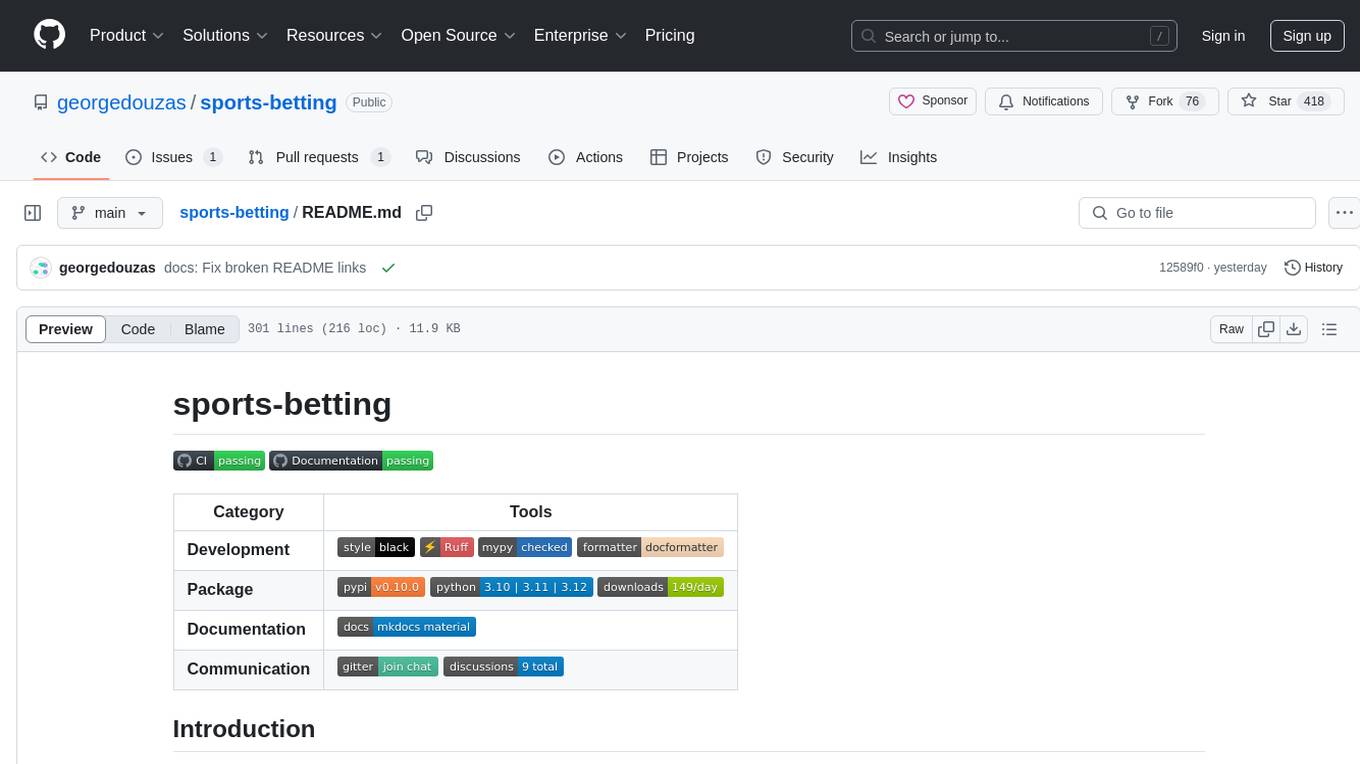
Sports-betting is a Python library for implementing betting strategies and analyzing sports data. It provides tools for collecting, processing, and visualizing sports data to make informed betting decisions. The library includes modules for scraping data from sports websites, calculating odds, simulating betting strategies, and evaluating performance. With sports-betting, users can automate betting processes, test different strategies, and improve their betting outcomes.
README:
| Category | Tools |
|---|---|
| Development |
  
|
| Package |
  
|
| Documentation |  |
| Communication |

|
The sports-betting package is a handy set of tools for creating, testing, and using sports betting models. It comes
with a Python API, a CLI, and even a GUI built with Reflex to keep things simple:
The main components of sports-betting are dataloaders and bettors objects:
- Dataloaders download and prepare data suitable for predictive modelling.
- Bettors provide an easy way to backtest betting strategies and predict the value bets of future events.
sports-betting comes with a GUI that provides a intuitive way to interact with the library. It supports the following
functionalitites:
- Easily upload, create, or update dataloaders to handle historical and fixtures data.
- Develop and test betting models with tools for backtesting and identifying value bets.
To launch the GUI, simply run the command sportsbet-gui. Once started, you’ll see the initial screen:
Explore the functionality with guidance from the built-in bot, which streams helpful messages along the way.
The sports-betting package makes it easy to download sports betting data:
from sportsbet.datasets import SoccerDataLoader
dataloader = SoccerDataLoader(param_grid={'league': ['Italy'], 'year': [2020]})
X_train, Y_train, O_train = dataloader.extract_train_data(odds_type='market_maximum')
X_fix, Y_fix, O_fix = dataloader.extract_fixtures_data()X_train are the historical/training data and X_fix are the test/fixtures data. The historical data can be used to backtest the
performance of a bettor model:
from sportsbet.evaluation import ClassifierBettor, backtest
from sklearn.dummy import DummyClassifier
bettor = ClassifierBettor(DummyClassifier())
backtest(bettor, X_train, Y_train, O_train)We can use the trained bettor model to predict the value bets using the fixtures data:
bettor.fit(X_train, Y_train)
bettor.bet(X_fix, O_fix)You can think of any sports betting event as a random experiment with unknown probabilities for the various outcomes. Even for the most unlikely outcome, for example scoring more than 10 goals in a soccer match, a small probability is still assigned. The bookmaker estimates this probability P and offers the corresponding odds O. In theory, if the bookmaker offers the so-called fair odds O = 1 / P in the long run, neither the bettor nor the bookmaker would make any money.
The bookmaker's strategy is to adjust the odds in their favor using the over-round of probabilities. In practice, it offers odds less than the estimated fair odds. The important point here is that the bookmaker still has to estimate the probabilities of outcomes and provide odds that guarantee them long-term profit.
On the other hand, the bettor can also estimate the probabilities and compare them to the odds the bookmaker offers. If the estimated probability of an outcome is higher than the implied probability from the provided odds, then the bet is called a value bet.
The only long-term betting strategy that makes sense is to select value bets. However, you have to remember that neither the bettor nor the bookmaker can access the actual probabilities of outcomes. Therefore, identifying a value bet from the side of the bettor is still an estimation. The bettor or the bookmaker might be wrong, or both of them.
Another essential point is that bookmakers can access resources that the typical bettor is rare to access. For instance, they have
more data, computational power, and teams of experts working on predictive models. You may assume that trying to beat them is
pointless, but this is not necessarily correct. The bookmakers have multiple factors to consider when they offer their adjusted
odds. This is the reason there is a considerable variation among the offered odds. The bettor should aim to systematically
estimate the value bets, backtest their performance, and not create arbitrarily accurate predictive models. This is a realistic
goal, and sports-betting can help by providing appropriate tools.
For user installation, sports-betting is currently available on the PyPi's repository, and you can install it via pip:
pip install sports-bettingIf you have Node.js version v22.0.0 or higher, you can optionally install the GUI:
pip install sports-betting[gui]Development installation requires to clone the repository and then use PDM to install the project as well as the main and development dependencies:
git clone https://github.com/georgedouzas/sports-betting.git
cd sports-betting
pdm installYou can access sports-betting through the GUI application, the Python API, or the CLI. However, it’s a good idea to
get familiar with the Python API since you’ll need it to create configuration files for the CLI or load custom betting
models into the GUI. sports-betting supports all common sports betting needs i.e. fetching historical and fixtures
data as well as backtesting of betting strategies and prediction of value bets.
Launch the GUI app with the command sportsbet-gui.
Here are a few things you can do with the GUI:
- Configure the dataloader:
- Create a new betting model:
- Run the model to get either backtesting results or value bets:
Assume we would like to backtest the following scenario and use the bettor object to predict value bets:
- Selection of data
- First and second division of German, Italian and French leagues for the years 2021-2024
- Maximum odds of the market in order to backtest our betting strategy
- Configuration of betting strategy
- 5-fold time ordered cross-validation
- Initial cash of 10000 euros
- Stake of 50 euros for each bet
- Use match odds (home win, away win and draw) as betting markets
- Logistic regression classifier to predict probabilities and value bets
# Selection of data
from sportsbet.datasets import SoccerDataLoader
leagues = ['Germany', 'Italy', 'France']
divisions = [1, 2]
years = [2021, 2022, 2023, 2024]
odds_type = 'market_maximum'
dataloader = SoccerDataLoader({'league': leagues, 'year': years, 'division': divisions})
X_train, Y_train, O_train = dataloader.extract_train_data(odds_type=odds_type)
X_fix, _, O_fix = dataloader.extract_fixtures_data()
# Configuration of betting strategy
from sklearn.model_selection import TimeSeriesSplit
from sklearn.compose import make_column_transformer
from sklearn.linear_model import LogisticRegression
from sklearn.impute import SimpleImputer
from sklearn.pipeline import make_pipeline
from sklearn.preprocessing import OneHotEncoder
from sklearn.multioutput import MultiOutputClassifier
from sportsbet.evaluation import ClassifierBettor, backtest
tscv = TimeSeriesSplit(5)
init_cash = 10000.0
stake = 50.0
betting_markets = ['home_win__full_time_goals', 'draw__full_time_goals', 'away_win__full_time_goals']
classifier = make_pipeline(
make_column_transformer(
(OneHotEncoder(handle_unknown='ignore'), ['league', 'home_team', 'away_team']), remainder='passthrough'
),
SimpleImputer(),
MultiOutputClassifier(LogisticRegression(solver='liblinear', random_state=7, class_weight='balanced', C=50)),
)
bettor = ClassifierBettor(classifier, betting_markets=betting_markets, stake=stake, init_cash=init_cash)
# Apply backtesting and get results
backtesting_results = backtest(bettor, X_train, Y_train, O_train, cv=tscv)
# Get value bets for upcoming betting events
bettor.fit(X_train, Y_train)
bettor.bet(X_fix, O_fix)The command sportsbet provides various sub-commands to download data and predict the value bets. For any sub-command you may
add the --help flag to get more information about its usage.
In order to use the commands, a configuration file is required. You can find examples of such configuration files in
sports-betting/configs/. The configuration file should have a Python file extension and contain a few variables. The variables
DATALOADER_CLASS and PARAM_GRID are mandatory while the rest are optional.
The following variables configure the data extraction:
-
DATALOADER_CLASS: The dataloader class to use. -
PARAM_GRID: The parameters grid to select the type of information that the data includes. -
DROP_NA_THRES: The parameterdrop_na_thresof the dataloader'sextract_train_data. -
ODDS_TYPE: The parameterodds_typeof the dataloader'sextract_train_data.
The following variables configure the betting process:
-
BETTOR: A bettor object. -
CV: The parametercvof the functionbacktest. -
N_JOBS: The parametern_jobsof the functionbacktest. -
VERBOSE: The parameterverboseof the functionbacktest.
Once these variables are provided, we can select the appropriate commands to select any of the sports-betting's functionalities.
Show available parameters for dataloaders:
sportsbet dataloader params -c config.pyShow available odds types:
sportsbet dataloader odds-types -c config.pyExtract training data and save them as CSV files:
sportsbet dataloader training -c config.py -d /path/to/directoryExtract fixtures data and save them as CSV files:
sportsbet dataloader fixtures -c config.py -d /path/to/directoryBacktest the bettor and save the results as CSV file:
sportsbet bettor backtest -c config.py -d /path/to/directoryGet the value bets and save them as CSV file:
sportsbet bettor bet -c config.py -d /path/to/directoryFor Tasks:
Click tags to check more tools for each tasksFor Jobs:
Alternative AI tools for sports-betting
Similar Open Source Tools

sports-betting
Sports-betting is a Python library for implementing betting strategies and analyzing sports data. It provides tools for collecting, processing, and visualizing sports data to make informed betting decisions. The library includes modules for scraping data from sports websites, calculating odds, simulating betting strategies, and evaluating performance. With sports-betting, users can automate betting processes, test different strategies, and improve their betting outcomes.
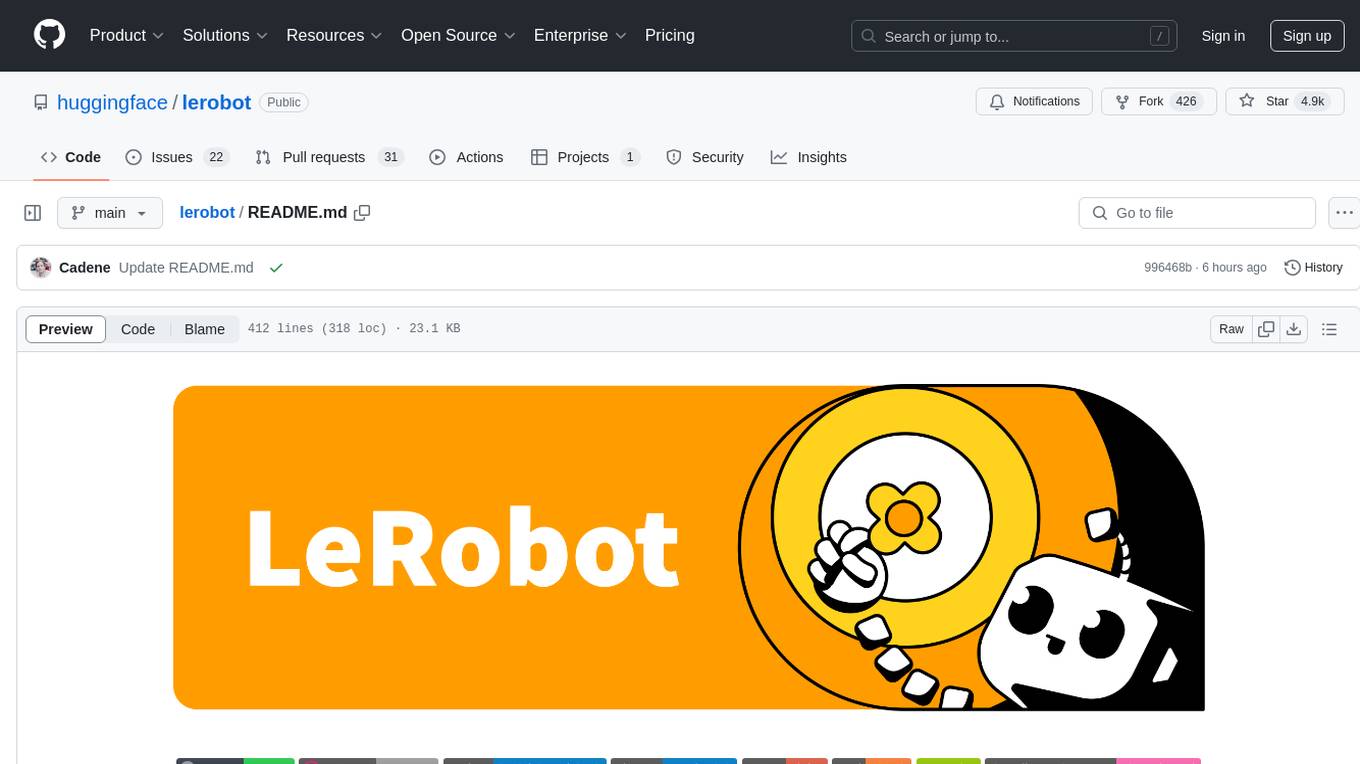
lerobot
LeRobot is a state-of-the-art AI library for real-world robotics in PyTorch. It aims to provide models, datasets, and tools to lower the barrier to entry to robotics, focusing on imitation learning and reinforcement learning. LeRobot offers pretrained models, datasets with human-collected demonstrations, and simulation environments. It plans to support real-world robotics on affordable and capable robots. The library hosts pretrained models and datasets on the Hugging Face community page.
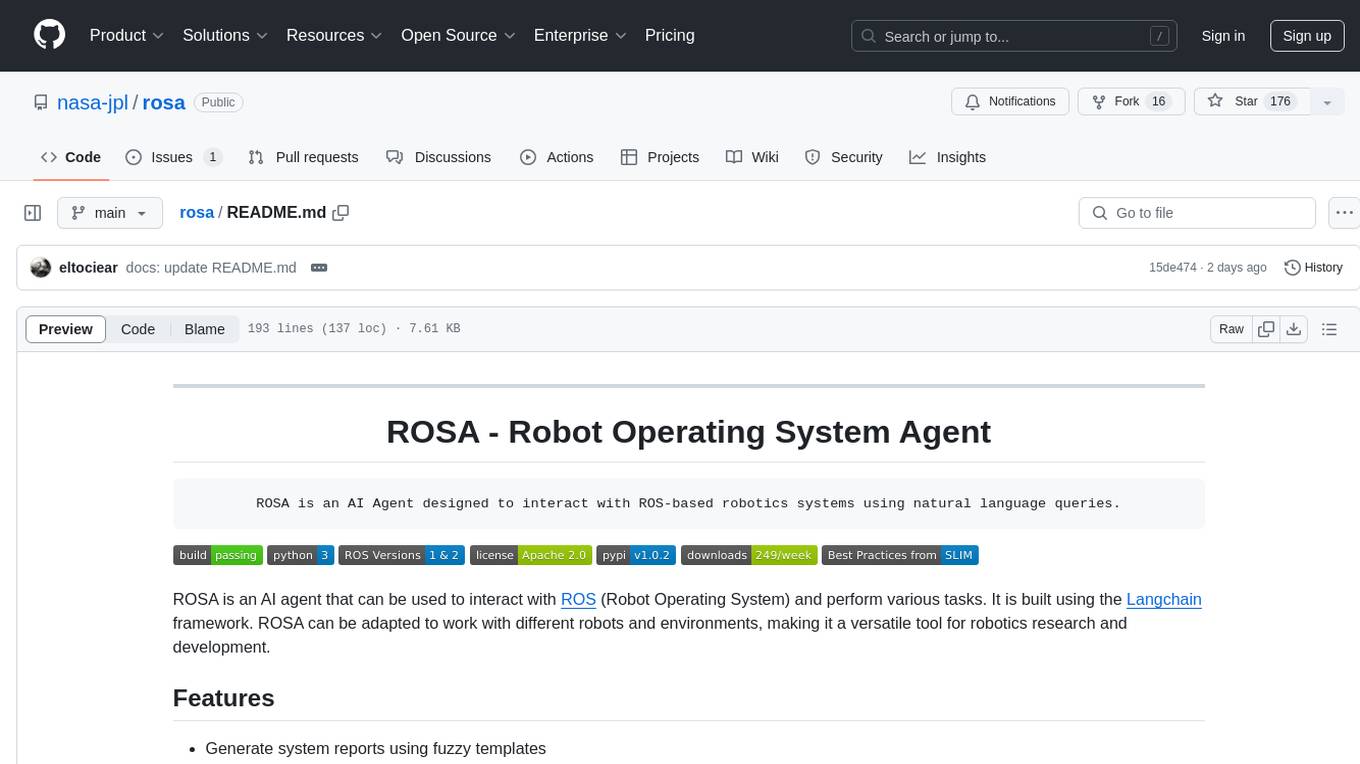
rosa
ROSA is an AI Agent designed to interact with ROS-based robotics systems using natural language queries. It can generate system reports, read and parse ROS log files, adapt to new robots, and run various ROS commands using natural language. The tool is versatile for robotics research and development, providing an easy way to interact with robots and the ROS environment.
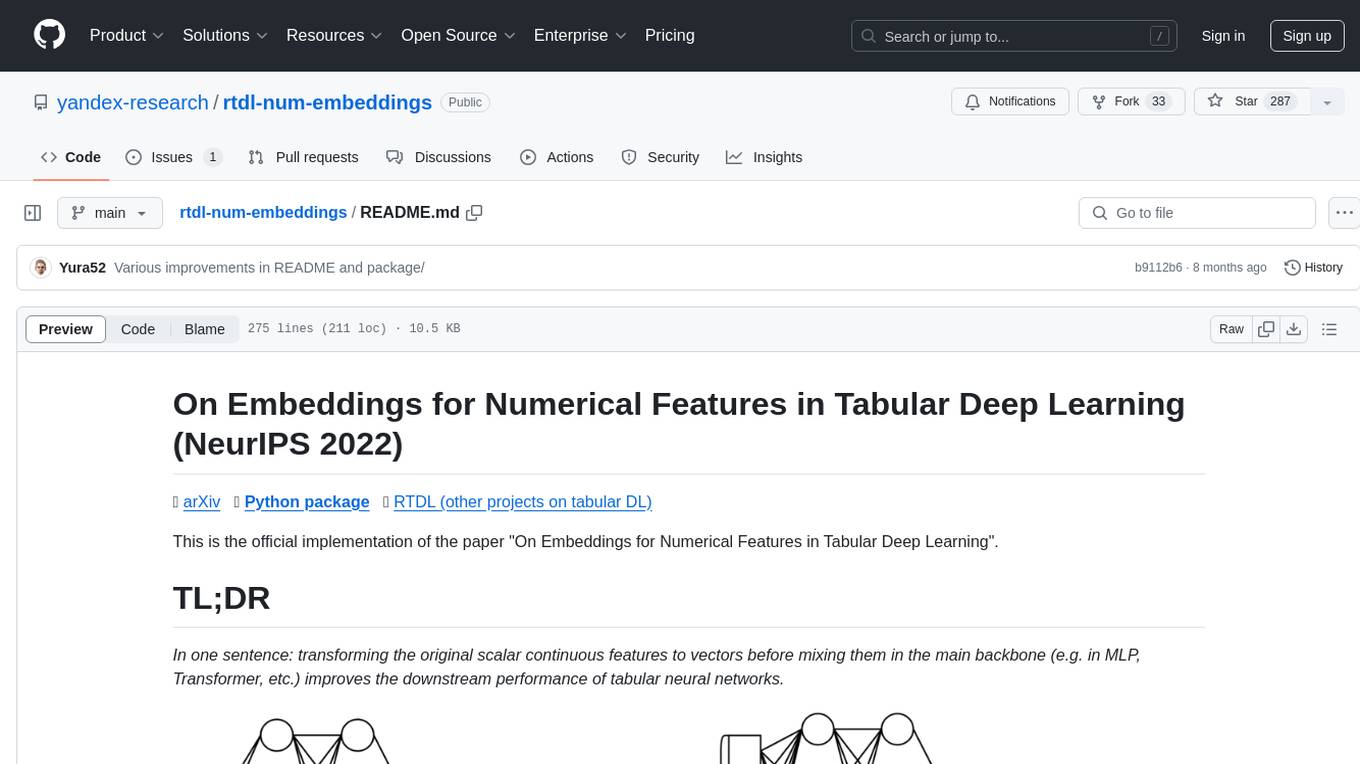
rtdl-num-embeddings
This repository provides the official implementation of the paper 'On Embeddings for Numerical Features in Tabular Deep Learning'. It focuses on transforming scalar continuous features into vectors before integrating them into the main backbone of tabular neural networks, showcasing improved performance. The embeddings for continuous features are shown to enhance the performance of tabular DL models and are applicable to various conventional backbones, offering efficiency comparable to Transformer-based models. The repository includes Python packages for practical usage, exploration of metrics and hyperparameters, and reproducing reported results for different algorithms and datasets.
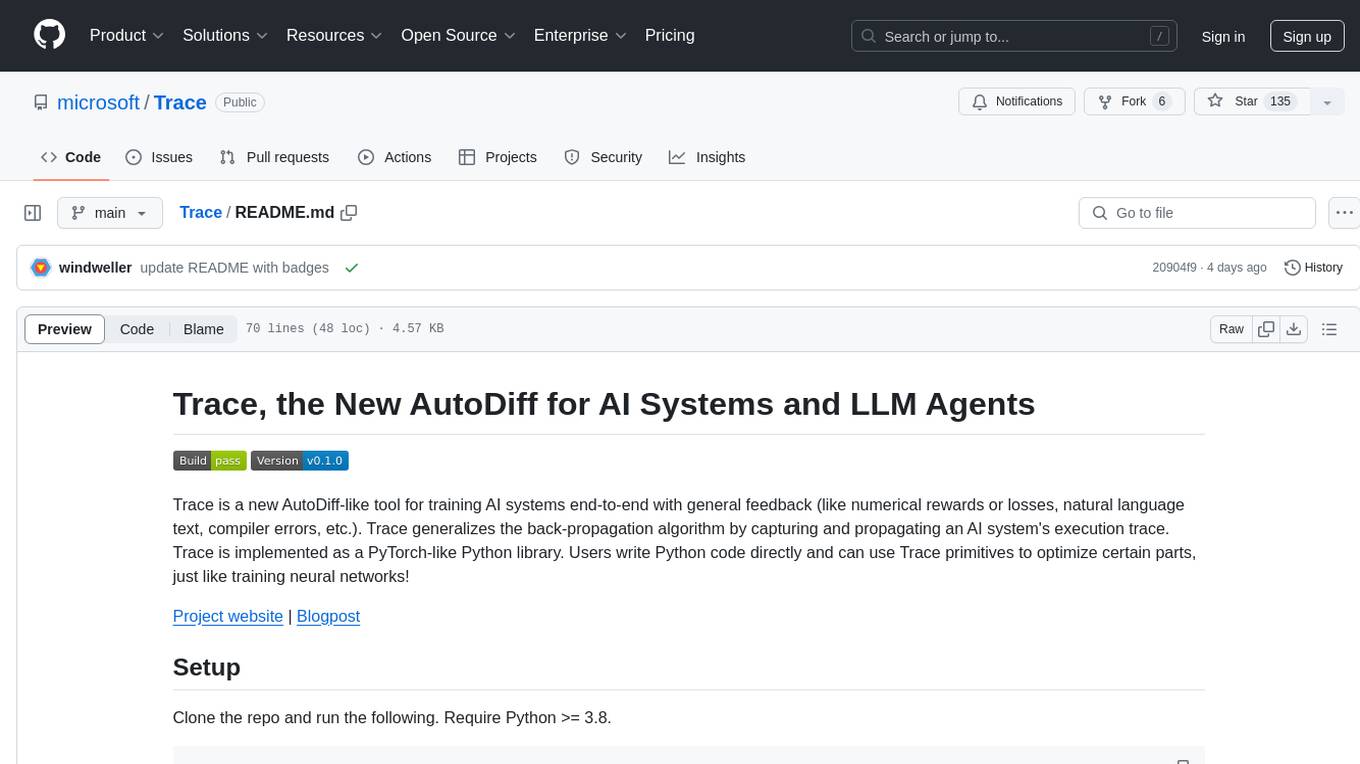
Trace
Trace is a new AutoDiff-like tool for training AI systems end-to-end with general feedback. It generalizes the back-propagation algorithm by capturing and propagating an AI system's execution trace. Implemented as a PyTorch-like Python library, users can write Python code directly and use Trace primitives to optimize certain parts, similar to training neural networks.
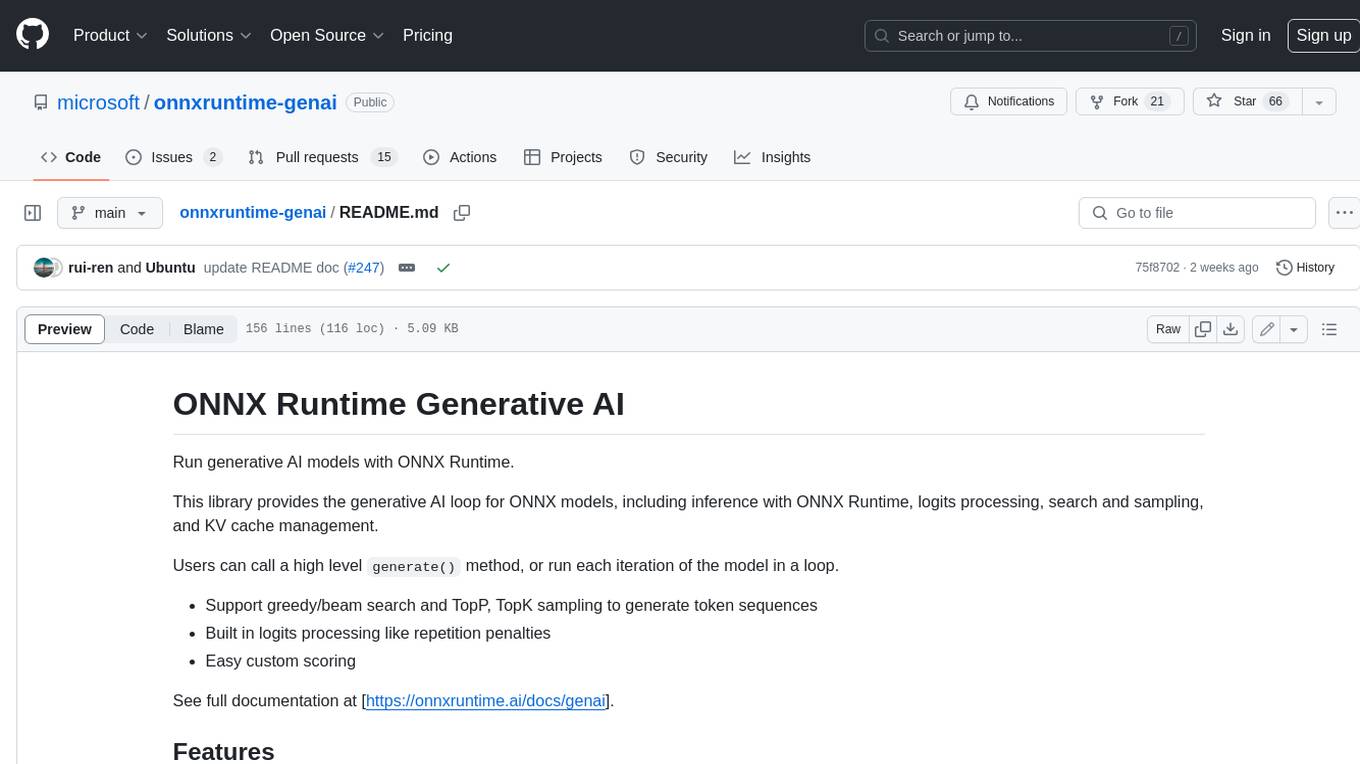
onnxruntime-genai
ONNX Runtime Generative AI is a library that provides the generative AI loop for ONNX models, including inference with ONNX Runtime, logits processing, search and sampling, and KV cache management. Users can call a high level `generate()` method, or run each iteration of the model in a loop. It supports greedy/beam search and TopP, TopK sampling to generate token sequences, has built in logits processing like repetition penalties, and allows for easy custom scoring.
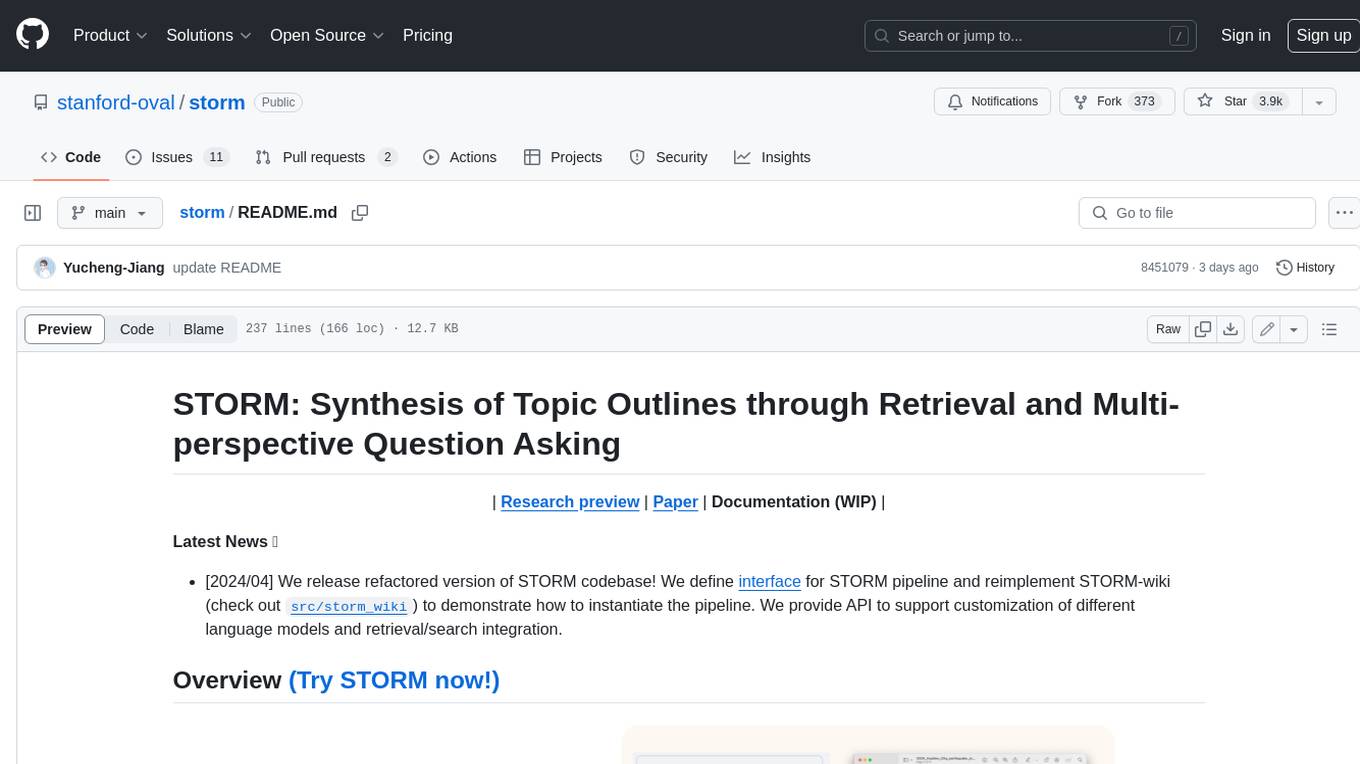
storm
STORM is a LLM system that writes Wikipedia-like articles from scratch based on Internet search. While the system cannot produce publication-ready articles that often require a significant number of edits, experienced Wikipedia editors have found it helpful in their pre-writing stage. **Try out our [live research preview](https://storm.genie.stanford.edu/) to see how STORM can help your knowledge exploration journey and please provide feedback to help us improve the system 🙏!**
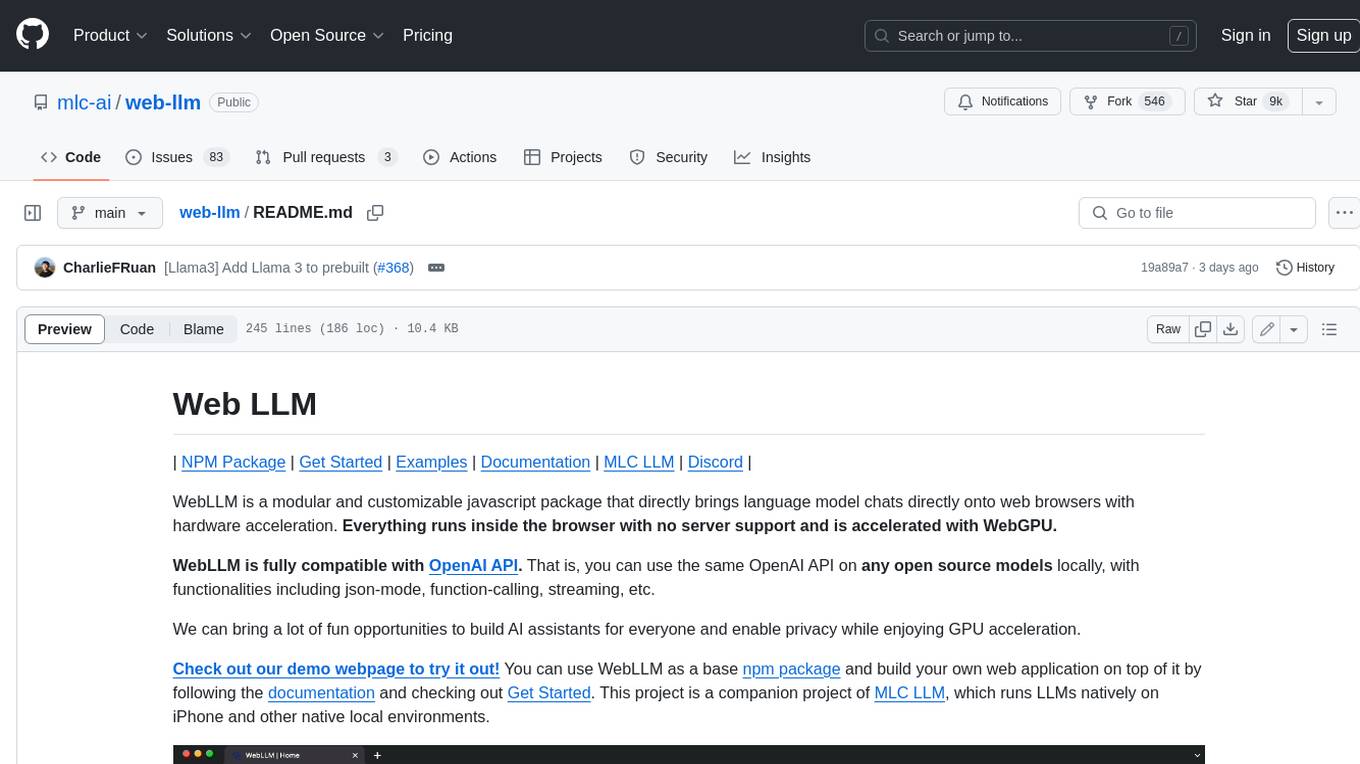
web-llm
WebLLM is a modular and customizable javascript package that directly brings language model chats directly onto web browsers with hardware acceleration. Everything runs inside the browser with no server support and is accelerated with WebGPU. WebLLM is fully compatible with OpenAI API. That is, you can use the same OpenAI API on any open source models locally, with functionalities including json-mode, function-calling, streaming, etc. We can bring a lot of fun opportunities to build AI assistants for everyone and enable privacy while enjoying GPU acceleration.
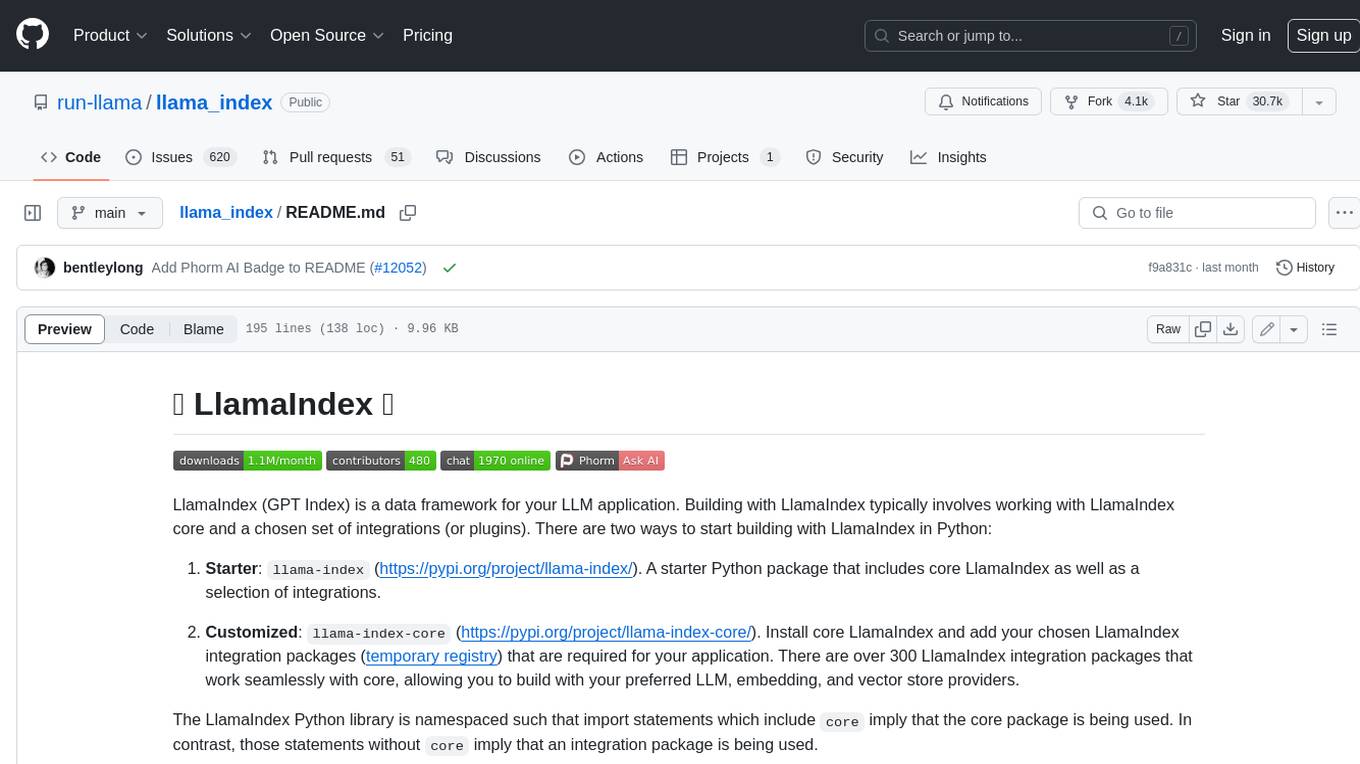
llama_index
LlamaIndex is a data framework for building LLM applications. It provides tools for ingesting, structuring, and querying data, as well as integrating with LLMs and other tools. LlamaIndex is designed to be easy to use for both beginner and advanced users, and it provides a comprehensive set of features for building LLM applications.

magika
Magika is a novel AI-powered file type detection tool that relies on deep learning to provide accurate detection. It employs a custom, highly optimized model to enable precise file identification within milliseconds. Trained on a dataset of ~100M samples across 200+ content types, achieving an average ~99% accuracy. Used at scale by Google to improve user safety by routing files to security scanners. Available as a command line tool in Rust, Python API, and bindings for Rust, JavaScript/TypeScript, and GoLang.
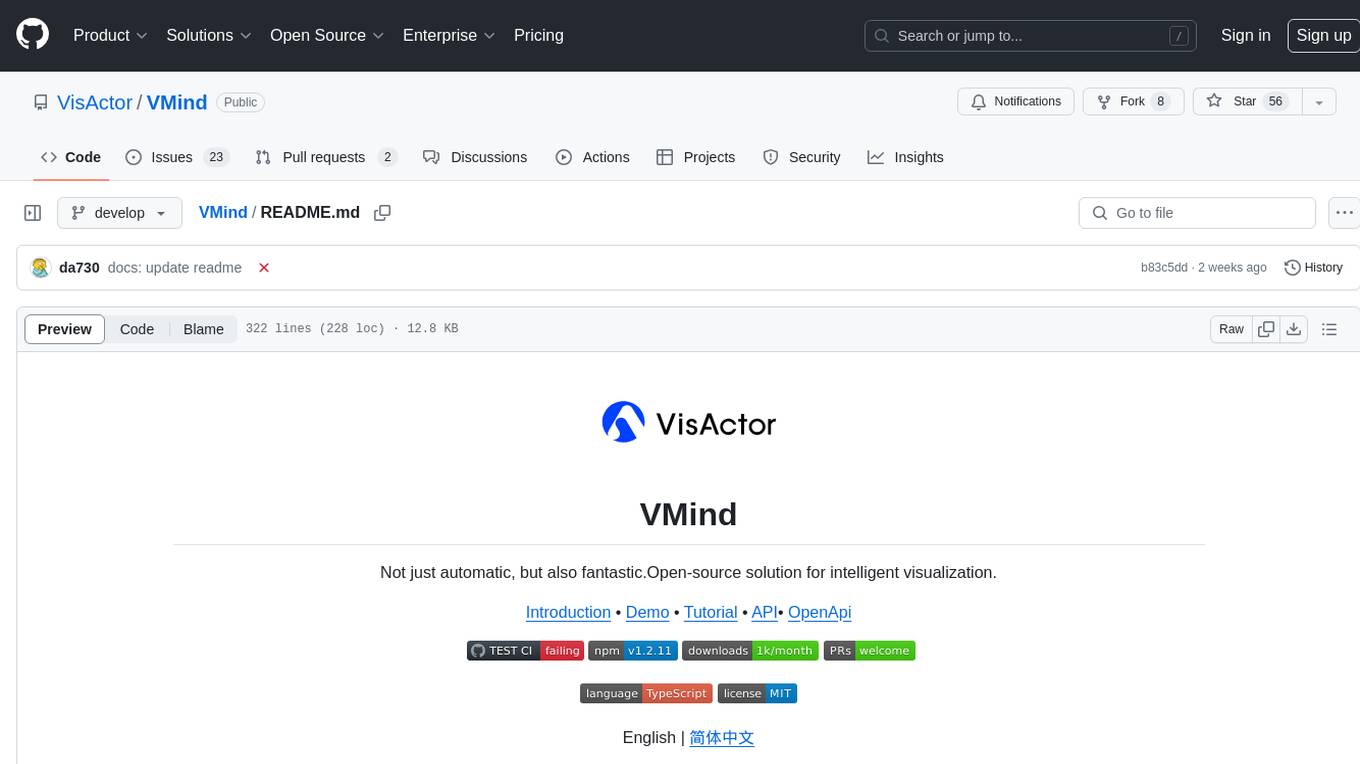
VMind
VMind is an open-source solution for intelligent visualization, providing an intelligent chart component based on LLM by VisActor. It allows users to create chart narrative works with natural language interaction, edit charts through dialogue, and export narratives as videos or GIFs. The tool is easy to use, scalable, supports various chart types, and offers one-click export functionality. Users can customize chart styles, specify themes, and aggregate data using LLM models. VMind aims to enhance efficiency in creating data visualization works through dialogue-based editing and natural language interaction.
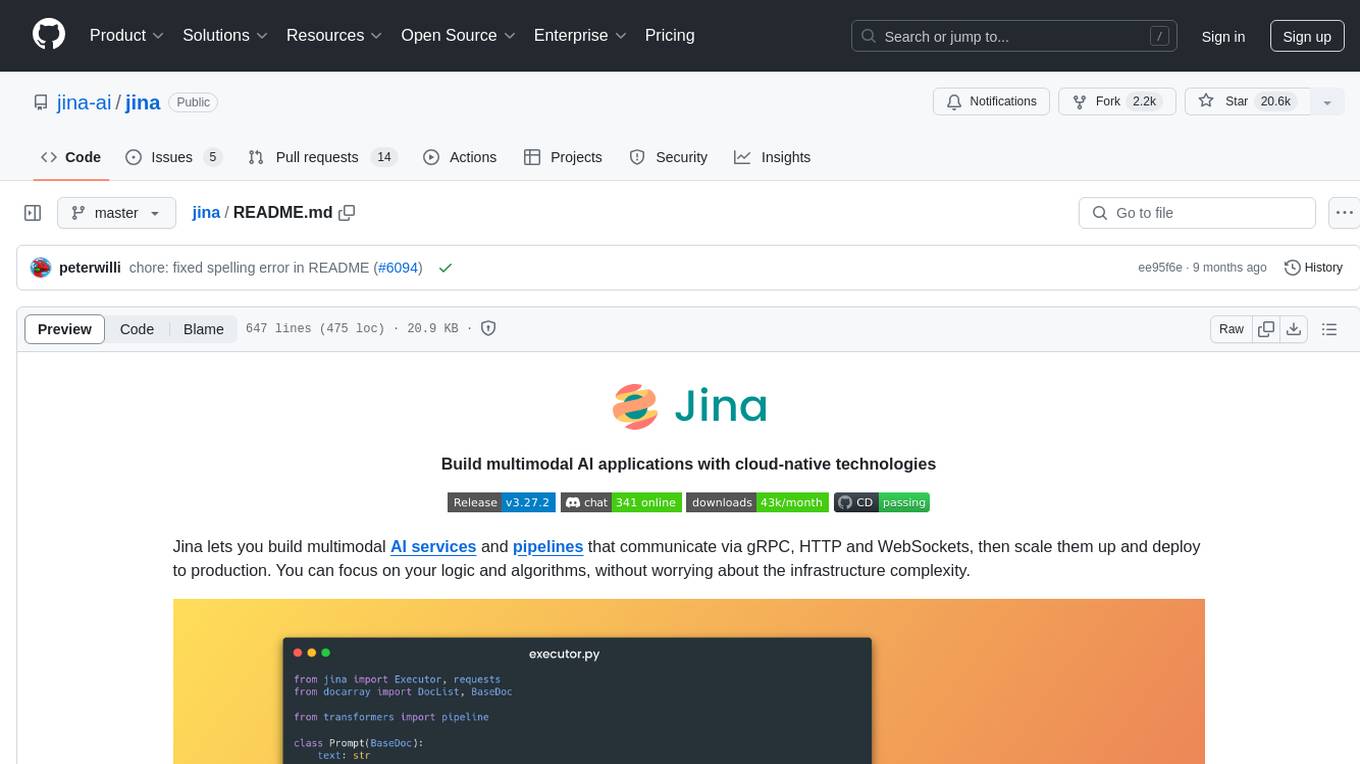
jina
Jina is a tool that allows users to build multimodal AI services and pipelines using cloud-native technologies. It provides a Pythonic experience for serving ML models and transitioning from local deployment to advanced orchestration frameworks like Docker-Compose, Kubernetes, or Jina AI Cloud. Users can build and serve models for any data type and deep learning framework, design high-performance services with easy scaling, serve LLM models while streaming their output, integrate with Docker containers via Executor Hub, and host on CPU/GPU using Jina AI Cloud. Jina also offers advanced orchestration and scaling capabilities, a smooth transition to the cloud, and easy scalability and concurrency features for applications. Users can deploy to their own cloud or system with Kubernetes and Docker Compose integration, and even deploy to JCloud for autoscaling and monitoring.

giskard
Giskard is an open-source Python library that automatically detects performance, bias & security issues in AI applications. The library covers LLM-based applications such as RAG agents, all the way to traditional ML models for tabular data.
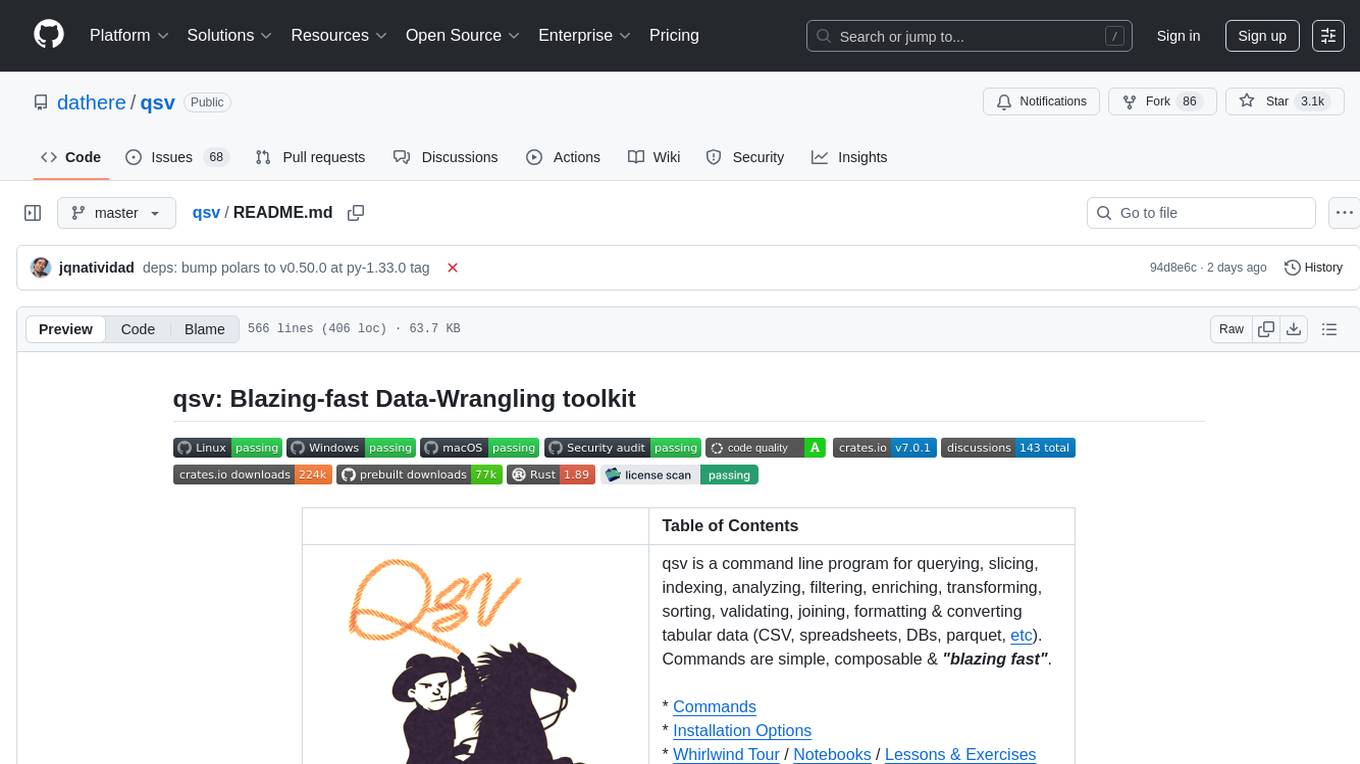
qsv
qsv is a command line program for querying, slicing, indexing, analyzing, filtering, enriching, transforming, sorting, validating, joining, formatting & converting tabular data (CSV, spreadsheets, DBs, parquet, etc). Commands are simple, composable & 'blazing fast'. It is a blazing-fast data-wrangling toolkit with a focus on speed, processing very large files, and being a complete data-wrangling toolkit. It is designed to be portable, easy to use, secure, and easy to contribute to. qsv follows the RFC 4180 CSV standard, requires UTF-8 encoding, and supports various file formats. It has extensive shell completion support, automatic compression/decompression using Snappy, and supports environment variables and dotenv files. qsv has a comprehensive test suite and is dual-licensed under MIT or the UNLICENSE.
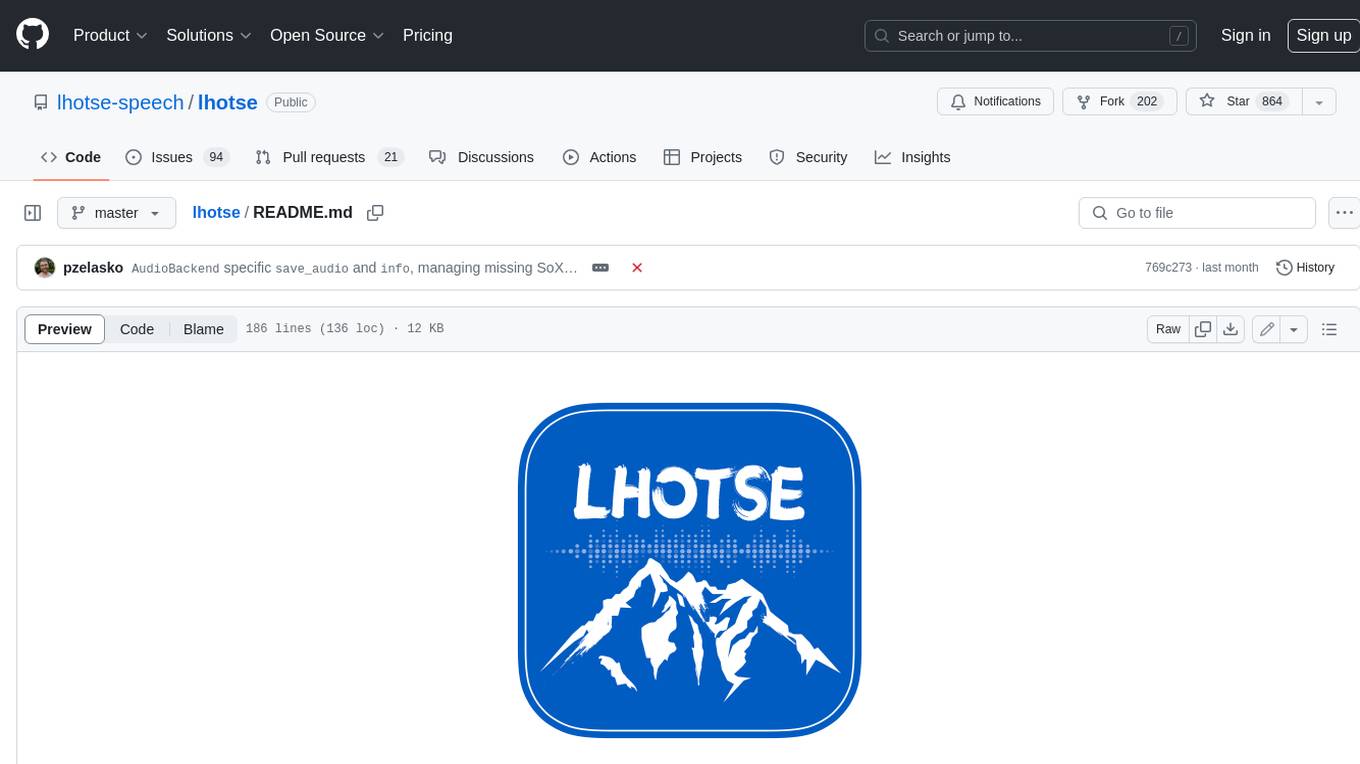
lhotse
Lhotse is a Python library designed to make speech and audio data preparation flexible and accessible. It aims to attract a wider community to speech processing tasks by providing a Python-centric design and an expressive command-line interface. Lhotse offers standard data preparation recipes, PyTorch Dataset classes for speech tasks, and efficient data preparation for model training with audio cuts. It supports data augmentation, feature extraction, and feature-space cut mixing. The tool extends Kaldi's data preparation recipes with seamless PyTorch integration, human-readable text manifests, and convenient Python classes.
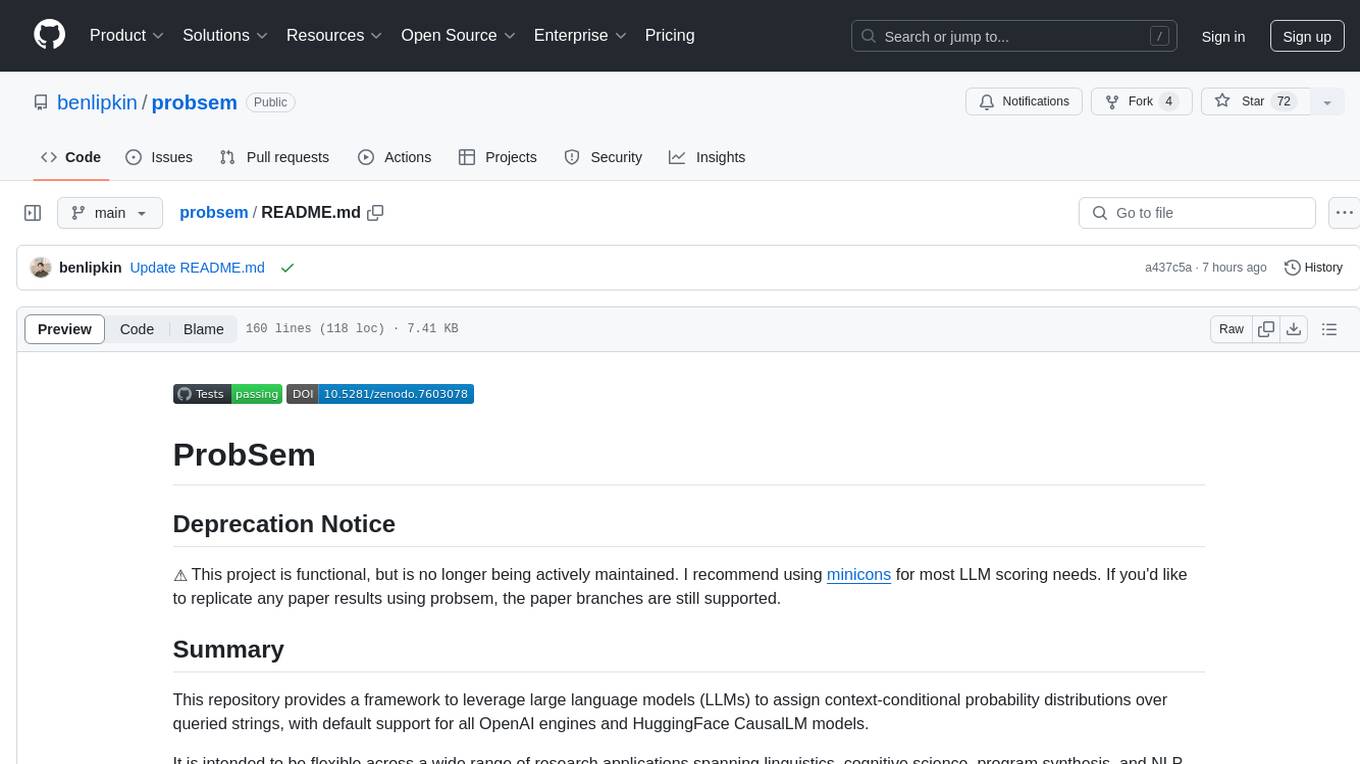
probsem
ProbSem is a repository that provides a framework to leverage large language models (LLMs) for assigning context-conditional probability distributions over queried strings. It supports OpenAI engines and HuggingFace CausalLM models, and is flexible for research applications in linguistics, cognitive science, program synthesis, and NLP. Users can define prompts, contexts, and queries to derive probability distributions over possible completions, enabling tasks like cloze completion, multiple-choice QA, semantic parsing, and code completion. The repository offers CLI and API interfaces for evaluation, with options to customize models, normalize scores, and adjust temperature for probability distributions.
For similar tasks

sports-betting
Sports-betting is a Python library for implementing betting strategies and analyzing sports data. It provides tools for collecting, processing, and visualizing sports data to make informed betting decisions. The library includes modules for scraping data from sports websites, calculating odds, simulating betting strategies, and evaluating performance. With sports-betting, users can automate betting processes, test different strategies, and improve their betting outcomes.
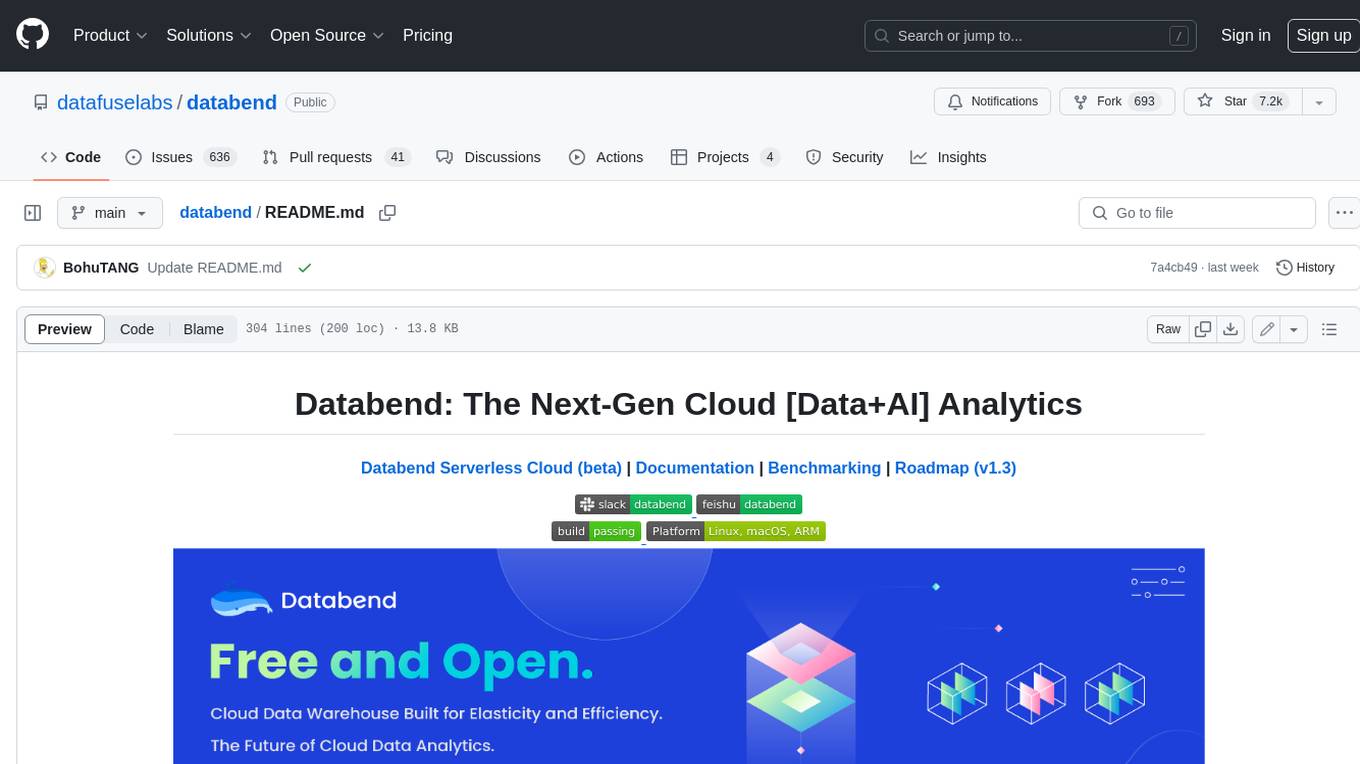
databend
Databend is an open-source cloud data warehouse that serves as a cost-effective alternative to Snowflake. With its focus on fast query execution and data ingestion, it's designed for complex analysis of the world's largest datasets.
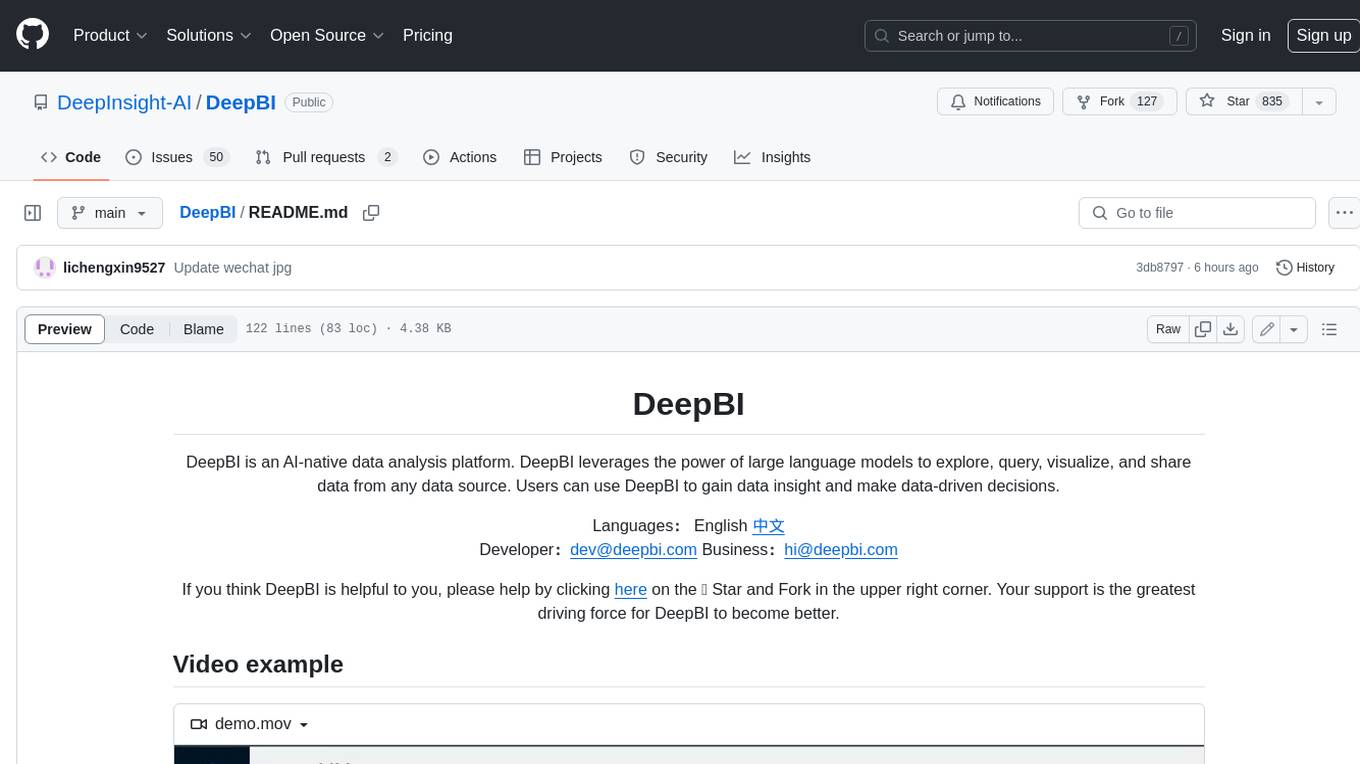
DeepBI
DeepBI is an AI-native data analysis platform that leverages the power of large language models to explore, query, visualize, and share data from any data source. Users can use DeepBI to gain data insight and make data-driven decisions.
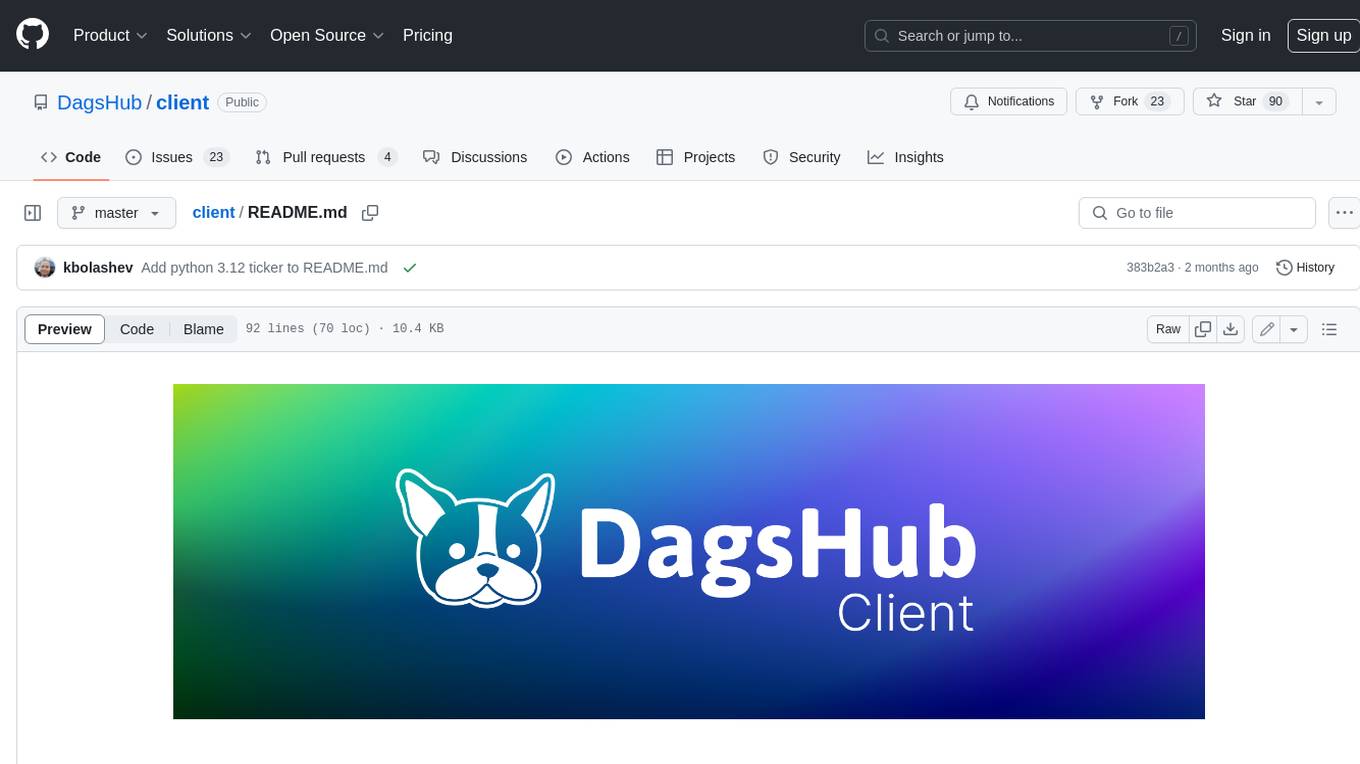
client
DagsHub is a platform for machine learning and data science teams to build, manage, and collaborate on their projects. With DagsHub you can: 1. Version code, data, and models in one place. Use the free provided DagsHub storage or connect it to your cloud storage 2. Track Experiments using Git, DVC or MLflow, to provide a fully reproducible environment 3. Visualize pipelines, data, and notebooks in and interactive, diff-able, and dynamic way 4. Label your data directly on the platform using Label Studio 5. Share your work with your team members 6. Stream and upload your data in an intuitive and easy way, while preserving versioning and structure. DagsHub is built firmly around open, standard formats for your project. In particular: * Git * DVC * MLflow * Label Studio * Standard data formats like YAML, JSON, CSV Therefore, you can work with DagsHub regardless of your chosen programming language or frameworks.
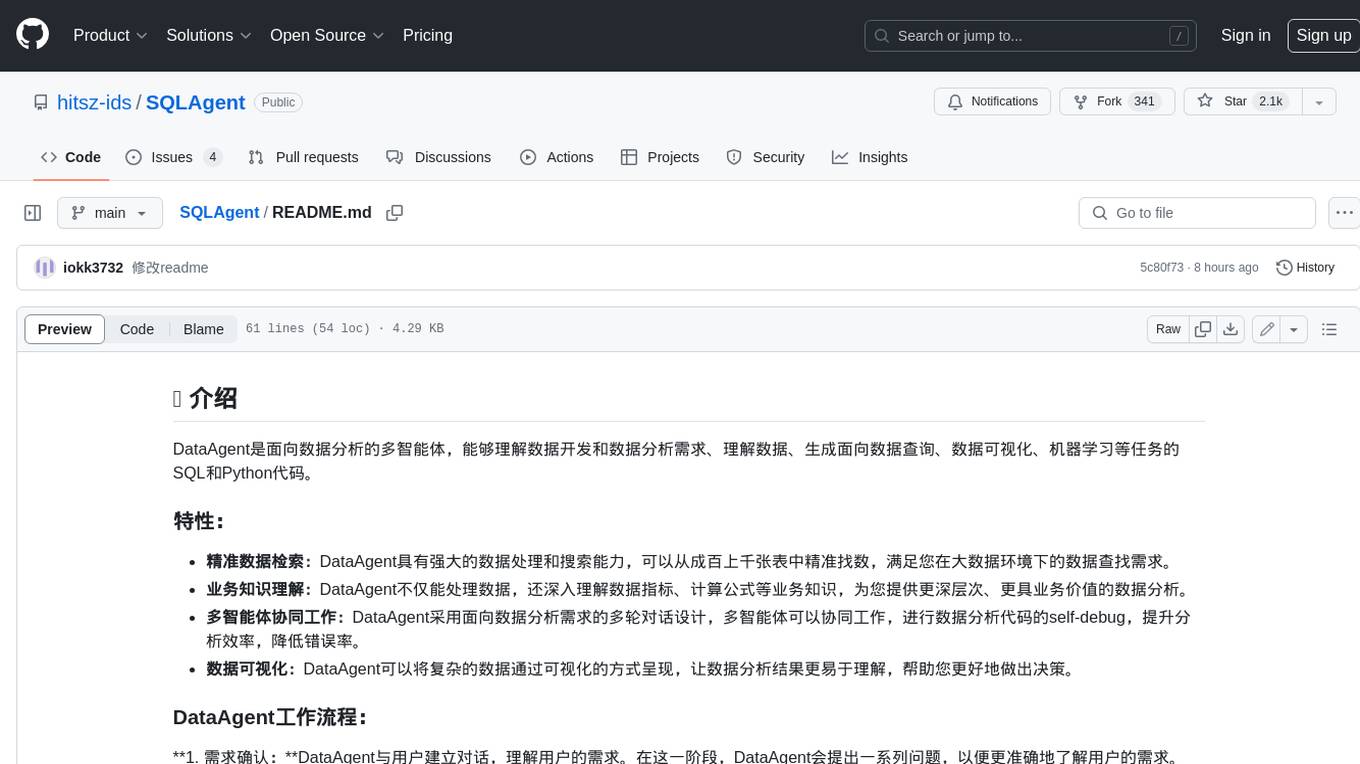
SQLAgent
DataAgent is a multi-agent system for data analysis, capable of understanding data development and data analysis requirements, understanding data, and generating SQL and Python code for tasks such as data query, data visualization, and machine learning.
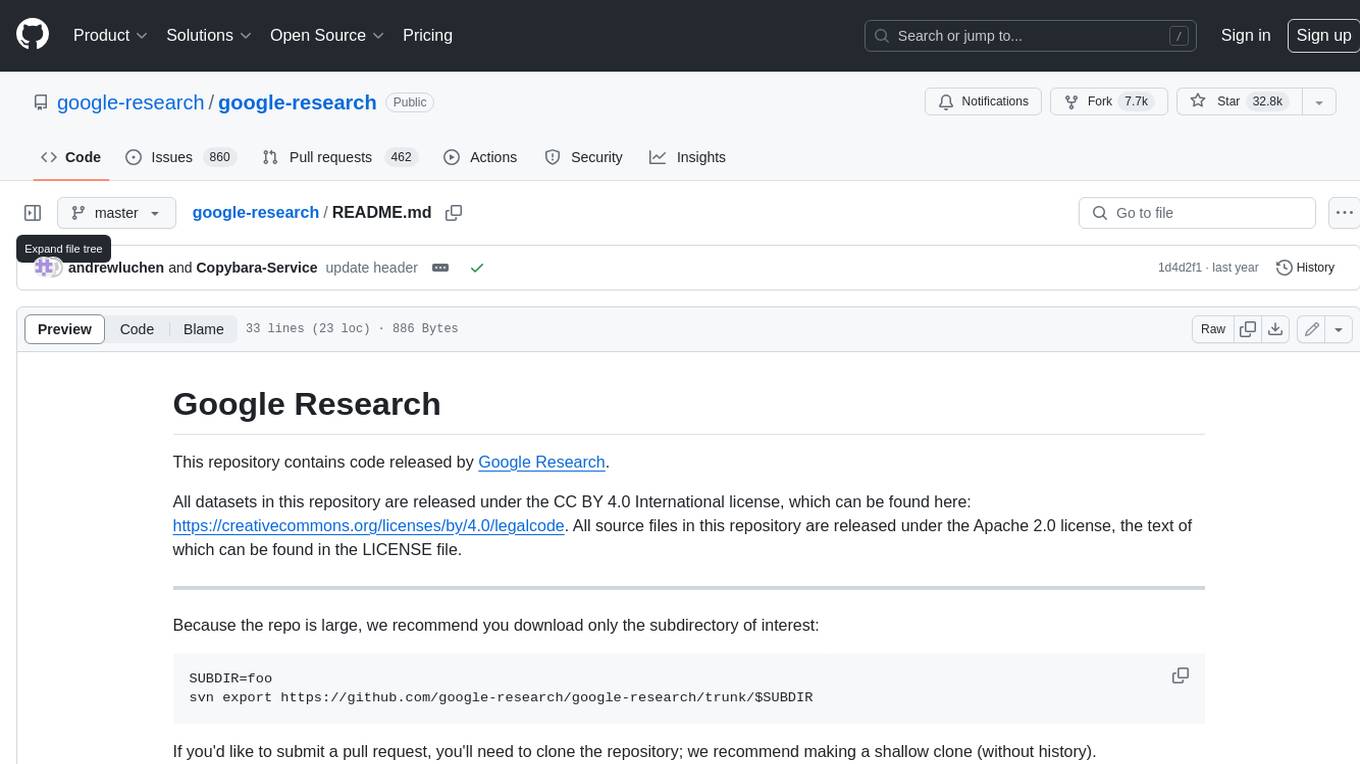
google-research
This repository contains code released by Google Research. All datasets in this repository are released under the CC BY 4.0 International license, which can be found here: https://creativecommons.org/licenses/by/4.0/legalcode. All source files in this repository are released under the Apache 2.0 license, the text of which can be found in the LICENSE file.
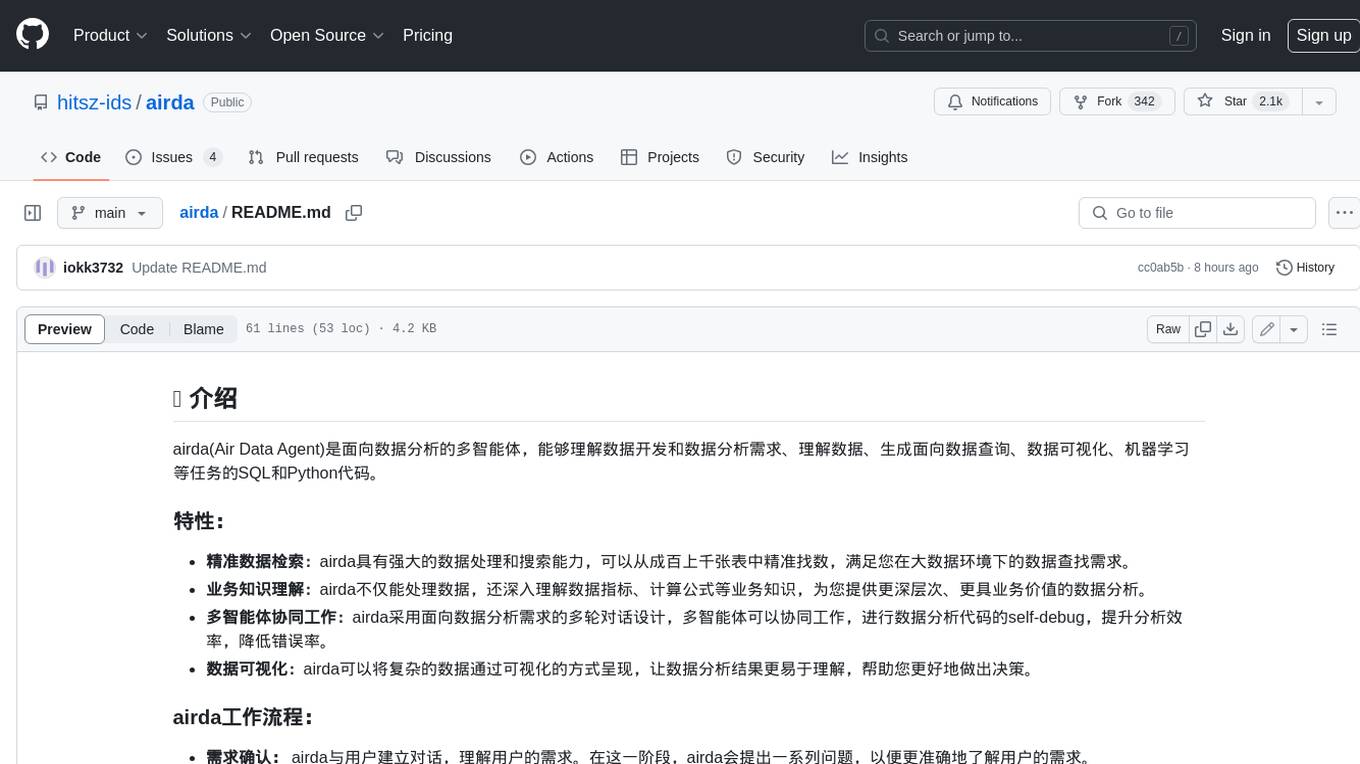
airda
airda(Air Data Agent) is a multi-agent system for data analysis, which can understand data development and data analysis requirements, understand data, and generate SQL and Python code for data query, data visualization, machine learning and other tasks.
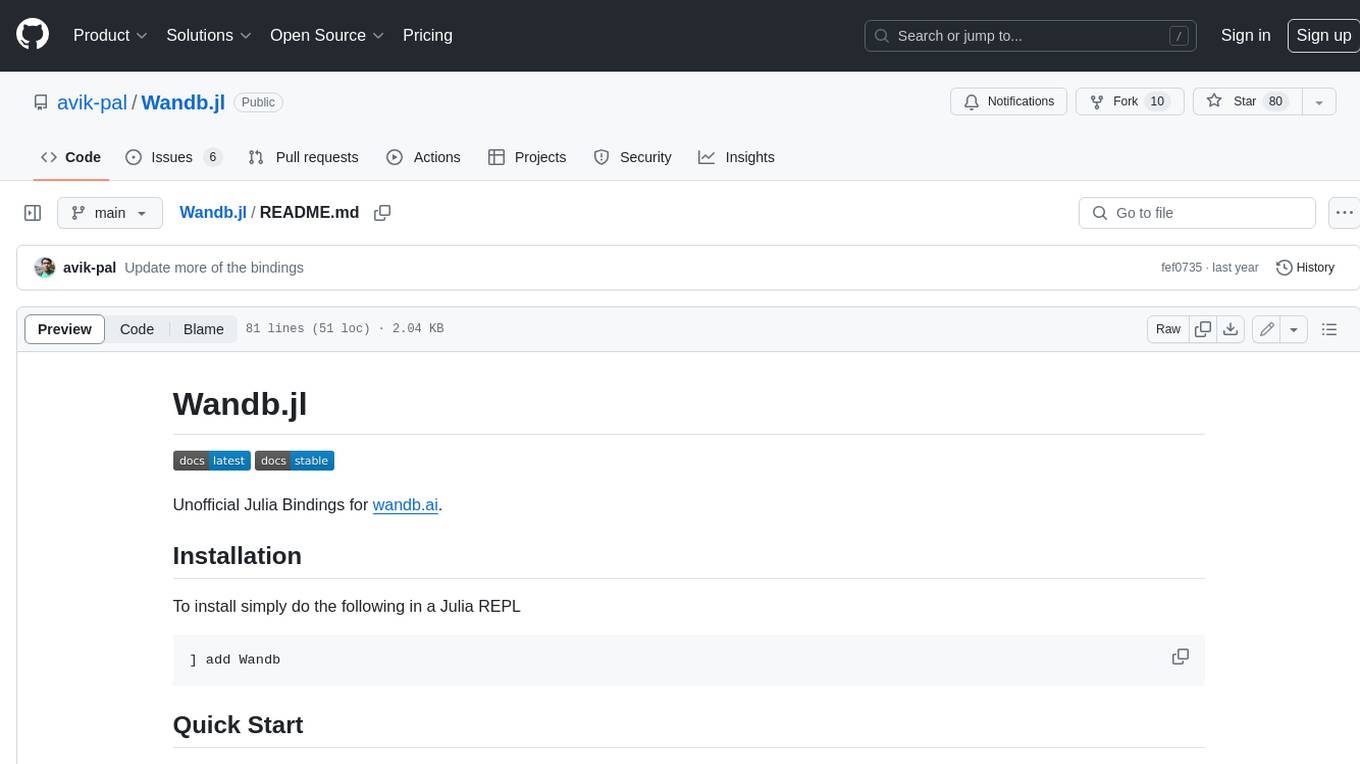
Wandb.jl
Unofficial Julia Bindings for wandb.ai. Wandb is a platform for tracking and visualizing machine learning experiments. It provides a simple and consistent way to log metrics, parameters, and other data from your experiments, and to visualize them in a variety of ways. Wandb.jl provides a convenient way to use Wandb from Julia.
For similar jobs

sports-betting
Sports-betting is a Python library for implementing betting strategies and analyzing sports data. It provides tools for collecting, processing, and visualizing sports data to make informed betting decisions. The library includes modules for scraping data from sports websites, calculating odds, simulating betting strategies, and evaluating performance. With sports-betting, users can automate betting processes, test different strategies, and improve their betting outcomes.

weave
Weave is a toolkit for developing Generative AI applications, built by Weights & Biases. With Weave, you can log and debug language model inputs, outputs, and traces; build rigorous, apples-to-apples evaluations for language model use cases; and organize all the information generated across the LLM workflow, from experimentation to evaluations to production. Weave aims to bring rigor, best-practices, and composability to the inherently experimental process of developing Generative AI software, without introducing cognitive overhead.
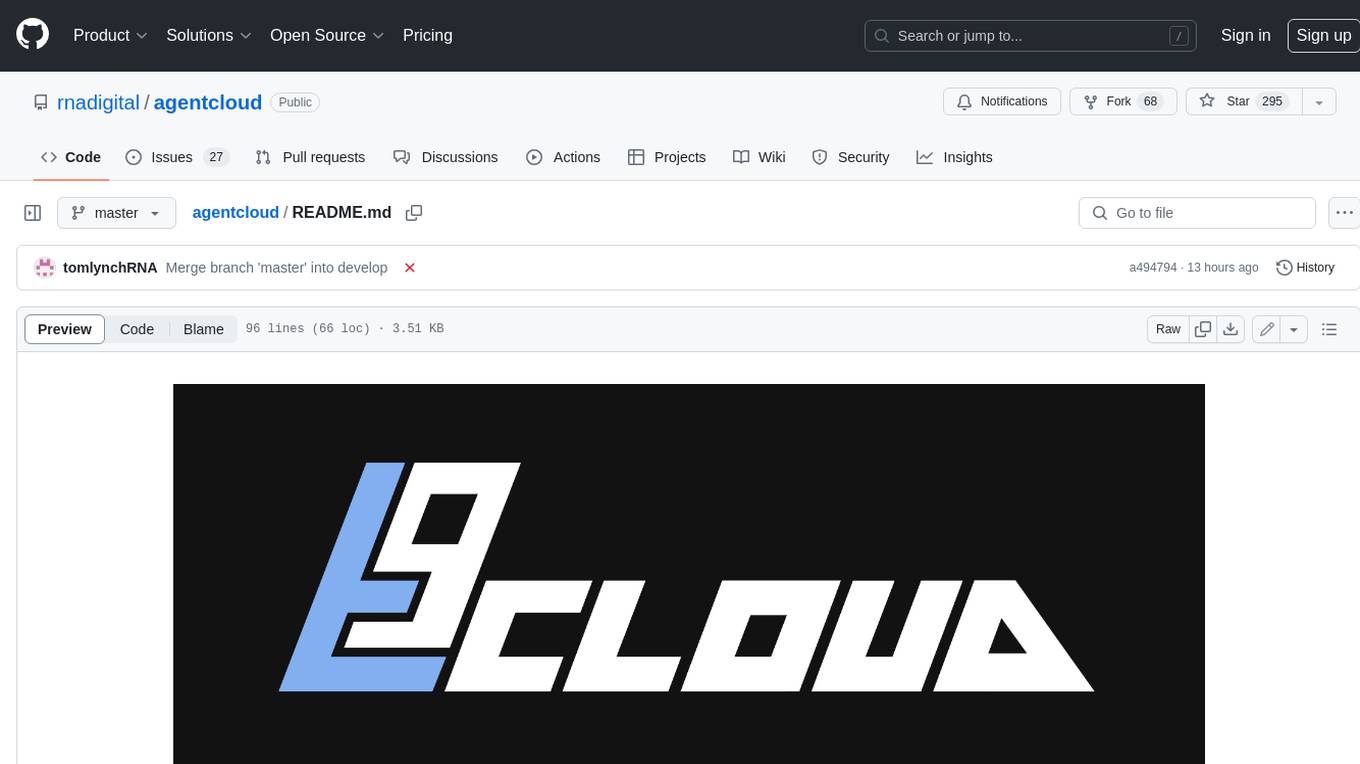
agentcloud
AgentCloud is an open-source platform that enables companies to build and deploy private LLM chat apps, empowering teams to securely interact with their data. It comprises three main components: Agent Backend, Webapp, and Vector Proxy. To run this project locally, clone the repository, install Docker, and start the services. The project is licensed under the GNU Affero General Public License, version 3 only. Contributions and feedback are welcome from the community.
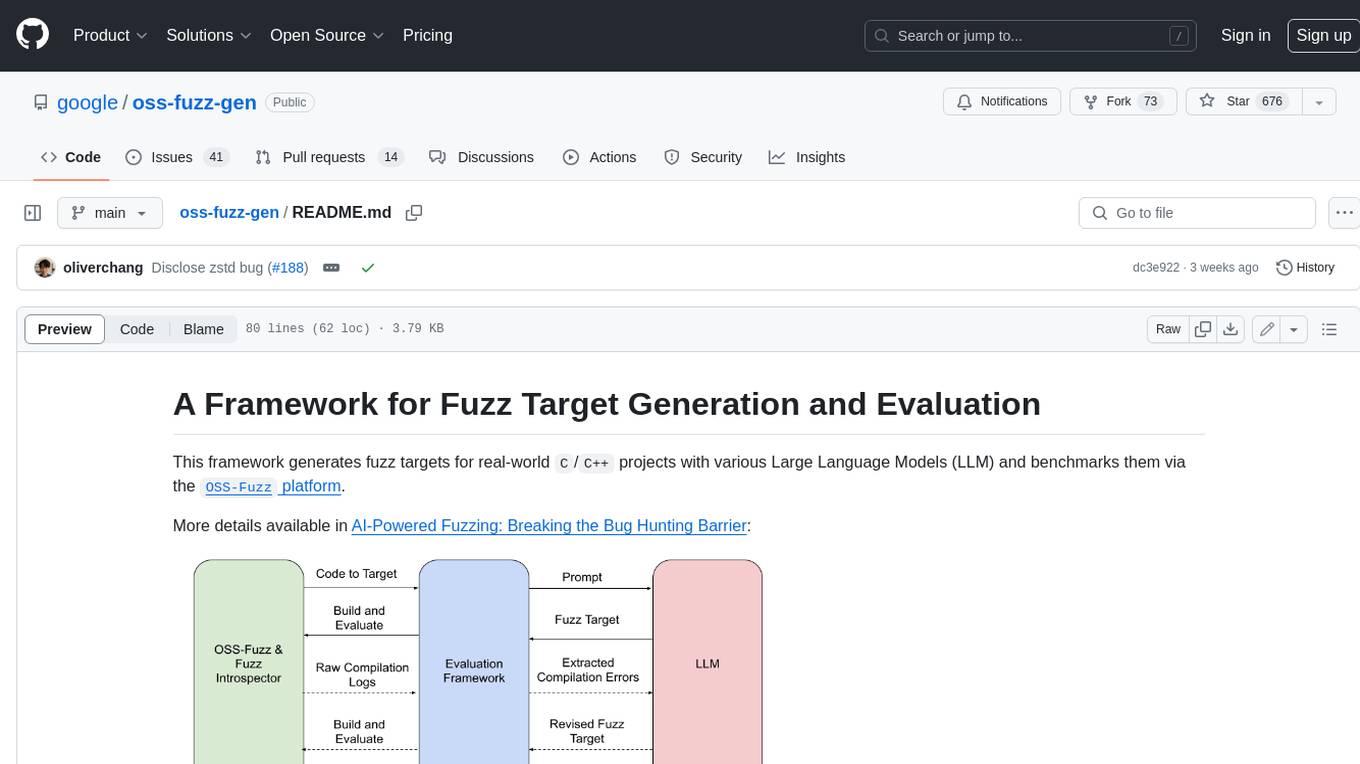
oss-fuzz-gen
This framework generates fuzz targets for real-world `C`/`C++` projects with various Large Language Models (LLM) and benchmarks them via the `OSS-Fuzz` platform. It manages to successfully leverage LLMs to generate valid fuzz targets (which generate non-zero coverage increase) for 160 C/C++ projects. The maximum line coverage increase is 29% from the existing human-written targets.

LLMStack
LLMStack is a no-code platform for building generative AI agents, workflows, and chatbots. It allows users to connect their own data, internal tools, and GPT-powered models without any coding experience. LLMStack can be deployed to the cloud or on-premise and can be accessed via HTTP API or triggered from Slack or Discord.

VisionCraft
The VisionCraft API is a free API for using over 100 different AI models. From images to sound.

kaito
Kaito is an operator that automates the AI/ML inference model deployment in a Kubernetes cluster. It manages large model files using container images, avoids tuning deployment parameters to fit GPU hardware by providing preset configurations, auto-provisions GPU nodes based on model requirements, and hosts large model images in the public Microsoft Container Registry (MCR) if the license allows. Using Kaito, the workflow of onboarding large AI inference models in Kubernetes is largely simplified.

PyRIT
PyRIT is an open access automation framework designed to empower security professionals and ML engineers to red team foundation models and their applications. It automates AI Red Teaming tasks to allow operators to focus on more complicated and time-consuming tasks and can also identify security harms such as misuse (e.g., malware generation, jailbreaking), and privacy harms (e.g., identity theft). The goal is to allow researchers to have a baseline of how well their model and entire inference pipeline is doing against different harm categories and to be able to compare that baseline to future iterations of their model. This allows them to have empirical data on how well their model is doing today, and detect any degradation of performance based on future improvements.









